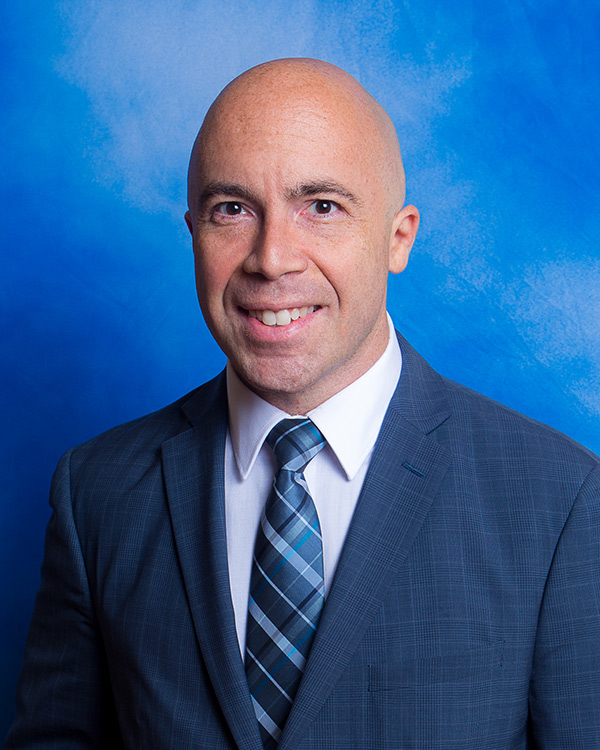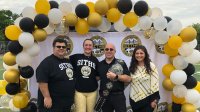Redefining What High School Is Supposed to Look Like
From restorative grading to paid internships, an equity-centered approach to education creates rich learning opportunities for all students.
Your content has been saved!
Go to My Saved Content.Transforming high school education for the future requires systems thinking—homing in on all elements of the learning experience, from instruction to assessment, curricula to professional development.
For a principal, this means being attuned to how various pedagogical approaches intersect, overlap, or complement one another in service of a larger vision. For Mark Erlenwein, principal of Staten Island Technical High School (SITHS)—a specialized public school serving students deemed “gifted and talented” across the five boroughs of New York City—that larger vision is equitable, responsive education.
Having attended SITHS himself and then worked for 25 years as a teacher and leader at the school, Erlenwein, the 2022 New York State Principal of the Year, is uniquely positioned to innovate in a community he knows well. He focuses on approaches such as project-based learning, paid student internships, and restorative assessment—which Erlenwein describes as an equity-centered approach to grading that seeks to support all students by providing them with opportunities to choose from a breadth of assessment types and to retake assessments to demonstrate learning. Erlenwein and his colleagues strive to emphasize the continuous nature of knowledge acquisition while accounting for contextual variables that may enhance or impede it.
I talked to Erlenwein to get his insights into what it takes to approach leadership in a transformative, holistic way.
BRITTANY COLLINS: What motivates your commitment to transforming education?
MARK ERLENWEIN: Our students typically come in as high achievers and leave as high achievers. But if you look behind the scenes, there is a great challenge from the social-emotional standpoint—the amount of pressure that students feel. And I don’t have an issue with going out on a limb and saying that, to a large degree, schools are not set up in favor of children. The bureaucracy—everything—gets in the way.
So our biggest thing at school has been to redefine what school is supposed to look like—to reimagine school, to create a space that doesn’t feel typical, a system and protocols and practices that are always in favor of the student. Why, in the real world, can you have multiple chances at something—a second chance when you make a mistake—and in school, it’s not set up that way?
COLLINS: What practices and protocols have you revamped in favor of students?
ERLENWEIN: There‘s a practice called mastery-based assessment; I like to refer instead to “restorative assessment.” That’s exactly what we do. If you didn’t do well enough on an assessment, you simply ask your teacher to take a reassessment. The teachers weren’t afraid of doing the extra work to make additional types of assessments, and when I say additional types of assessments, I don’t mean just multiple choice and essay-based. I mean really thinking about how to make project-based learning and experiential learning opportunities for students that break the mold of traditional assessment.
COLLINS: How have you supported teachers in their transition to this approach?
ERLENWEIN: It’s wonderful to come up with all these ideas, but if you don’t work with teachers and support them to do it, you won’t succeed. At the end of the day, doing restorative anything—giving a second chance—means more work. So we created a restorative assessment center where teachers can submit their reassessments for students to take during their lunch periods or after school—which is the choice of the student—and we have one of our faculty members proctor these reassessments, so it’s never on the teacher’s shoulders to have to find the extra time.
In addition to creating these additional assessments and opportunities, we’re always and continually working to figure out how to make the best of and innovate on what’s traditional.

COLLINS: What does that look like in practice?
ERLENWEIN: One way we did that was by putting in a schoolwide makerspace that is constantly booked from September to June by classes in mathematics, English, social studies, science, physical education, foreign languages. Teachers are creating—each year, over time—intentional units of study: The beginning, the middle, and the end all focus around a major project that involves a lot of voice and choice. We also have a professional commercial artist whose job is to support the teachers in the makerspace.
In a mathematics class, students are creating dioramas where they have to solve some sort of geometric problem, then demonstrate it as a real-world application. In another class, we have students designing, coding, and building Bluetooth wireless speakers. We give them whatever composite material they want to use—plastic, fiberglass, whatever it happens to be—and they design and make a Bluetooth speaker from scratch.
The biggest part of my passion is trying to make learning happen in and outside of the classroom and connected to what the real world is asking of us.
COLLINS: How do you and your teachers take learning beyond the classroom?
ERLENWEIN: We’ve had 700 students participate in paid internships. We want our students to try the majors and activities and tasks that they think they want to do when they graduate, because we have found that what students think they want to do, or parents are encouraging them to do, is not what they want to do, and not what they end up doing.
Every ninth grader has to take a course called Introduction to Talk-nology. It’s a soft skills class and oracy class usually taught by the work-based learning coordinator, who is the gatekeeper to the internships. Students are taught interpersonal skills, communication skills, collaboration, presentation, and selling and branding themselves, starting in the ninth grade. I like to call it academic wellness.
We have a networking party with special tables and food, and the students have to stand and mingle. We emulate this sort of a networking party, because they have to learn how to do it. They have to dress the part that day, and I film it so we can watch it back to give them some feedback.
And we created a curriculum for the course that all of our teachers have access to, so when they’re doing some sort of discussion or talk-based project, there are protocols they can use.
COLLINS: That focus on communication sounds incredibly helpful for students. How do you approach communication in your work as a leader?
ERLENWEIN: I feel passionately that students who are labeled “gifted and talented” are, in their own way, in a form of special education. They need their own advocate. I was compelled, working with students, to become an administrator and be able to not only have ideas and vision, but to make some of these changes we’re discussing in a leadership capacity.
I feel what’s helped me be successful is that I can’t help but approach every challenge and opportunity in this building without looking at it from the perspective of student, teacher, and parent, and from a leadership standpoint—all those voices are constantly talking to me and giving me those different perspectives to be empathetic when making decisions.
I do a lot of listening. I’m the storyteller in chief. I actively listen to what the challenges are, what the students want, what the parents want, and consider what the faculty and I can do to meet the needs of the students and parents.
